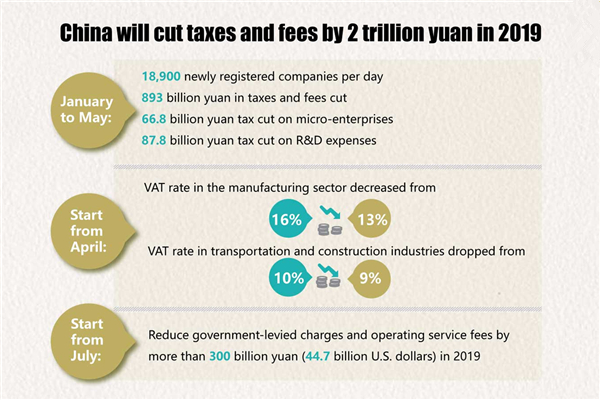Asymmetric investment strategies are at the forefront of a transformative approach taken by wealthy families across Australia, reshaping how they manage their wealth. Rather than adhering to conventional investment methods, these affluent dynasties have begun exploring unique private equity opportunities and alternative investments that yield substantial returns—often exceeding 20%—while mitigating risk. The shift from public markets to direct lending, private credit, and other innovative investment avenues reflects a growing strategy among family offices aimed at safeguarding generational wealth. As the landscape of family office investment evolves, understanding these asymmetric strategies offers valuable insights into building wealth sustainably in dynamic market conditions. Through this exploration, we will uncover what affluent families are investing in beyond the common knowledge, including the burgeoning interest in private equity in Australia.
Wealthy investment families are increasingly turning to non-traditional methods to safeguard and expand their financial portfolios. Emphasizing tactical deployment of private capital, these affluent groups engage in minority stake acquisitions and direct lending ventures, illustrating a pivot towards alternative funding sources. By moving their assets away from conventional stock investments and real estate, they are redefining what it means to build a legacy through strategic family office investment. This shift highlights their readiness to engage in sophisticated strategies that promise high returns, thereby enhancing their resilience against market volatility. Through examining these discreet but impactful investment strategies, we gain insight into how they leverage their resources to thrive amidst economic shifts.
Understanding Asymmetric Investment Strategies
Asymmetric investment strategies involve approaches that seek to maximize returns while minimizing risk exposure. Wealthy families, particularly those operating family offices, are utilizing these strategies to secure high yields that traditional investment methods often fail to provide. Unlike conventional portfolios that heavily rely on equities and bonds, asymmetric strategies leverage alternative investments like private equity, commodities, and direct lending. These diversified approaches allow families to achieve significant upsides without a proportional increase in risk, especially in today’s unpredictable market climate.
A profound understanding of the market dynamics is pivotal for families employing asymmetric strategies. They may invest in niche sectors such as data centers or innovative startups in Israel that promise substantial returns. In Australia, family offices are increasingly turning towards private equity and direct lending as they optimize their portfolios for stability and growth. This trend reflects a deeper commitment to adaptable investment methodologies that prioritize long-term sustainability and profitability, showcasing unique tactics that challenge conventional investment wisdom.
The Shift from Public to Private Investments
In recent years, there has been a notable migration of wealth away from public markets into private investments, driven by family offices in Australia. Research indicates that a significant portion of assets, once allocated to stocks, are now favoring private equity and direct lending strategies. This shift is primarily motivated by the need for stable returns that are less influenced by market volatility and government policies, thus ensuring a safer growth trajectory for wealth.
For instance, family offices are capitalizing on opportunities in private credit markets, which allow them to provide loans directly, often bypassing traditional banking routes. This not only opens up new revenue streams but also enables families to maintain control over their capital. A notable case is the Lederer family, which has created its own private credit lending fund that exemplifies this evolution in investment strategy by actively managing over $200 million in loans and integrating their investments into a comprehensive wealth management framework.
Building In-House Investment Teams
Wealthy families are increasingly opting to establish in-house investment teams rather than relying on external fund managers. This move is seen as a strategic shift that enhances flexibility, control, and alignment of interests. By building dedicated teams, family offices can dive more deeply into alternative investments, like private equity and direct lending, ensuring that investment choices resonate with their unique values and long-term goals.
The trend towards internal management is also influenced by the desire for better oversight of capital deployment. Family offices can tailor their investment decisions without outside pressures, which is crucial for navigating the complexities of private markets. By doing so, families can leverage their networks to explore co-investment opportunities and manage risk more efficiently, a significant advantage in the evolving landscape of wealth management.
Navigating Offshore Opportunities for Wealth Preservation
As global uncertainties rise, Australian families are looking to offshore safe havens as a means to safeguard their wealth. Factors such as political instability, increased taxes, and geopolitical tensions are prompting a strategic reassessment of investment locations. Countries like the UAE and emerging Asian markets are becoming attractive destinations where families can mitigate risk while continuing to grow their portfolios through diverse, market-oriented investments.
Offshore investments allow wealthy families to explore innovative paths that traditional public markets might not offer. By strategically positioning themselves in foreign jurisdictions, they can access unique opportunities within sectors like real estate and direct lending—allowing for potential higher returns while preserving their capital. Families recognize that navigating these waters requires not just financial acumen but also a deep understanding of international market dynamics and compliance, further emphasizing the importance of sophisticated investment strategies.
Dealing With Growing Property Investment Risks
The traditional allure of property investments is diminishing as Australian family offices grapple with increased government taxation, particularly on real estate. This growing burden poses challenges for families seeking to diversify their portfolios while maintaining liquidity. Many family offices are responding by reallocating capital from property assets into higher-yielding alternative investments, such as private businesses and direct lending, which can operate effectively in a global context.
With changes in public perception regarding real estate and luxury properties, family offices are moving towards investments that offer better inflation protection and less regulatory scrutiny. By focusing on dynamic sectors and direct lending opportunities, families can pivot to more resilient asset classes that adhere to their long-term financial strategies, ensuring the preservation of generational wealth amid changing economic conditions.
Embracing Patient Capital for Long-Term Gains
The concept of patient capital is becoming increasingly relevant in the investment landscape, particularly among wealthy families seeking to manage generational wealth. Unlike conventional capital that demands immediate returns, patient capital allows families to take a long-term view, making investments that may take time to mature but ultimately yield significant advantages. This perspective is especially beneficial in private credit and direct lending, where families can anticipate potential hurdles and respond with strategic support.
Family offices have the luxury to be patient, even when immediate troubles arise with their investments. They can navigate through challenging periods while implementing corrective measures, such as restructuring their investments or providing additional funding to stabilize ventures. This approach not only reinforces their investment strategy but also cultivates resilience in fluctuating markets, enhancing the overall robustness of their wealth strategies.
Exploring Unique Investment Opportunities in Emerging Markets
Emerging markets present a rich tapestry of investment possibilities that wealthy families are keenly exploring. With Australia’s reliance on traditional markets dwindling, family offices are looking beyond borders to find underexploited opportunities in regions with high growth potential. Sectors like technology, agriculture, and natural resources are becoming focal points for targeted investments that can yield superior returns.
Issuing direct investments in startups and disruptive businesses within these markets allows family offices to tap into expansive growth trajectories that are often absent in developed economies. This strategy not only diversifies their portfolios but also aligns with their long-term vision of innovation and sustainability, drawing on insights gained from their experiences within their home markets. By embracing a forward-thinking investment ethos, these families can secure their assets against market volatility while driving progression in nascent sectors.
Direct Lending: Reshaping Wealth Management Dynamics
Direct lending is revolutionizing wealth management for Australia’s leading family offices, offering an attractive alternative to traditional banking products. By facilitating loans directly to companies, family offices can capture higher interest rates and foster deeper relationships with businesses they invest in. This strategy is particularly beneficial in a low-interest-rate environment, where fixed income returns are dwindling, prompting families to seek out direct lending as a viable alternative.
Engaging in direct lending also means family offices can effectively assess and manage risk according to their own strategic parameters. By evaluating creditworthiness through their networks, they can tailor loan conditions and terms that resonate with their investment philosophies. This adaptability is a vital aspect of maintaining compliance with their overarching goal of wealth preservation and generational growth, allowing them to seize market opportunities that align with both their risk-return profiles and market insights.
The Role of Family Office Investment Strategies in Wealth Preservation
Family office investment strategies play a crucial role in the preservation and enhancement of wealth across generations. With access to substantial capital, these offices can invest strategically in diverse asset classes, from private equity to alternative investments like direct lending. This multifaceted approach allows families to adapt to evolving market conditions while mitigating risks associated with traditional investment routes.
By tailoring investment strategies that prioritize active control, capital preservation, and risk management, family offices can navigate uncertainties effectively. Wealthy families are capitalizing on insights gained from shaped investment philosophies that reflect their values and aspirations. As these strategies evolve, they not only safeguard financial resources but also enhance the potential for significant growth, ensuring a legacy of wealth that endures.
Frequently Asked Questions
What are asymmetric investment strategies employed by wealthy families?
Asymmetric investment strategies refer to approaches in which the potential upside of an investment significantly outweighs the downside risk. Wealthy families, particularly in Australia, are increasingly utilizing these strategies by focusing on alternative investments such as private equity, direct lending, and offshore opportunities that allow for higher returns with controlled risks.
How do family offices in Australia adopt asymmetric investment strategies?
Family offices in Australia adopt asymmetric investment strategies by moving a larger portion of their portfolios from public markets to private equity and direct lending. They build in-house investment teams to manage capital deployment, allowing them to pursue sophisticated deals that yield returns exceeding 20%, while maintaining a focus on long-term capital preservation.
What role does private equity play in the asymmetric investment strategies of wealthy families?
Private equity plays a crucial role in the asymmetric investment strategies of wealthy families by providing opportunities for substantial returns through direct investments in private companies. By avoiding the volatility of public markets, affluent families can deploy patient capital and take on calculated risks that lead to asymmetric returns relative to the risk involved.
Why are wealthy families moving capital from traditional property investments to asymmetric strategies?
Wealthy families are shifting capital from traditional property investments to asymmetric strategies due to concerns over increased government taxation, the volatility of real estate markets, and the desire for better control over investment outcomes. Asymmetric strategies, including private lending and business acquisitions, offer more flexibility and potential for higher returns.
What is the significance of direct lending strategies in achieving asymmetric returns?
Direct lending strategies are significant for achieving asymmetric returns as they allow wealthy families to provide capital directly to borrowers, bypassing traditional financial institutions. This approach not only yields higher interest rates but also offers families better risk management and control over their investments, enabling them to capitalize on opportunities that are often overlooked in public markets.
How do wealthy families manage risk while pursuing asymmetric investments?
Wealthy families manage risk while pursuing asymmetric investments by utilizing strategies such as thorough due diligence, long-term capital deployment, and developing in-house investment teams. This enables them to assess risks effectively and implement tailored risk underwriting practices that can provide higher returns without corresponding increases in risk.
What types of alternative investments reflect the asymmetric strategies of wealthy families?
Types of alternative investments that reflect the asymmetric strategies of wealthy families include private equity funds, venture capital in tech startups, direct lending to businesses, and investments in unique sectors such as data centres and offshore businesses. These investments allow families to diversify their portfolios while aiming for high returns that traditional markets may not provide.
How do offshore investments contribute to asymmetric investment strategies?
Offshore investments contribute to asymmetric investment strategies by allowing families to mitigate risks associated with local sovereign issues, tax burdens, and geopolitical conflicts. By diversifying their holdings internationally, wealthy families can access investment opportunities that offer substantial returns while reducing exposure to domestic uncertainties.
What challenges do wealthy families face when implementing asymmetric investment strategies?
Challenges wealthy families face when implementing asymmetric investment strategies include navigating regulatory environments, ensuring sufficient due diligence, and managing the inherent risks of private investments. Additionally, maintaining flexibility in their investment approach and adapting to evolving market conditions can pose significant challenges.
How can learning about wealthy families’ investment strategies aid other investors?
Learning about wealthy families’ investment strategies can aid other investors by providing insights into alternative investment approaches and risk management techniques. Understanding how these affluent families leverage asymmetric strategies can inspire retail investors to explore opportunities beyond public markets and apply similar principles to their own investment portfolios.
| Key Points | Details |
|---|---|
| Investment Shift | Australia’s wealthy families are moving from traditional public markets to private credit and direct private equity investments. |
| Asymmetric Returns | Families seek investments yielding returns of 20% or more while managing risk effectively. |
| Family Business Growth | Australia has seen a 150% increase in family businesses, totaling approximately 2,000 in the past decade. |
| Building In-House Capabilities | Family offices, like the Lederer family office, are building their own investment capabilities instead of relying on external funds. |
| Offshore Investments | Concerns about sovereign risk are driving families to relocate wealth offshore, with operations in places like the UAE and emerging Asian markets. |
| Property Investments Decline | Increasing property taxes and risks associated with traditional property investments are causing wealthy families to shift focus. |
| Patient Capital | Family offices can afford to take calculated risks, providing funding with a long-term view and flexibility. |
Summary
Asymmetric investment strategies are becoming increasingly essential for wealthy families looking to preserve and grow their wealth. By transitioning from traditional investment avenues to innovative avenues like private credit and direct equity, these families are not only seeking high returns but are also rethinking risk management. This strategy reflects a deeper understanding of market dynamics and serves as a key driver of generational wealth preservation, underscoring how adaptive strategies can reap greater rewards.



